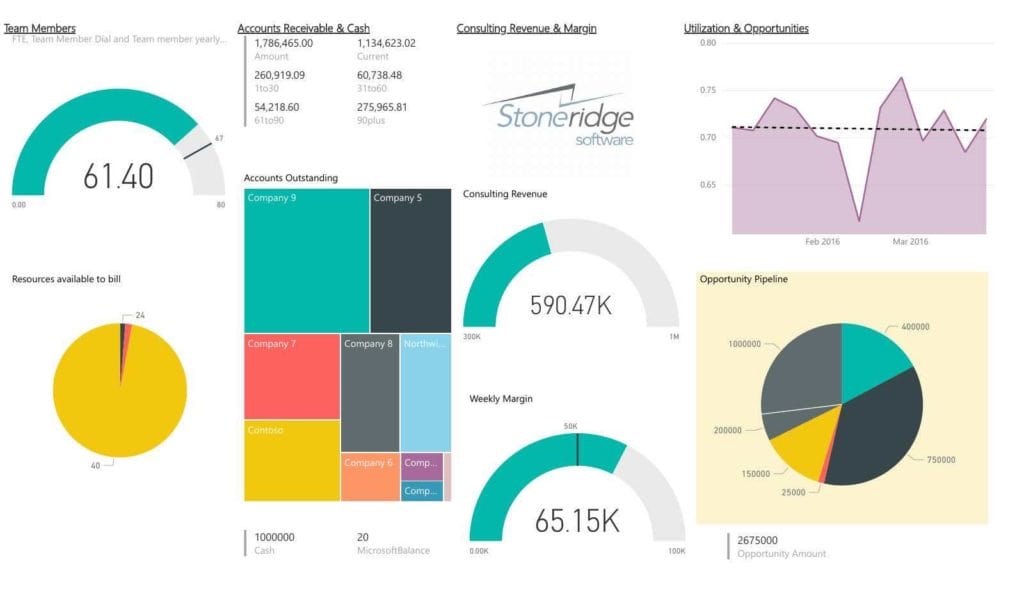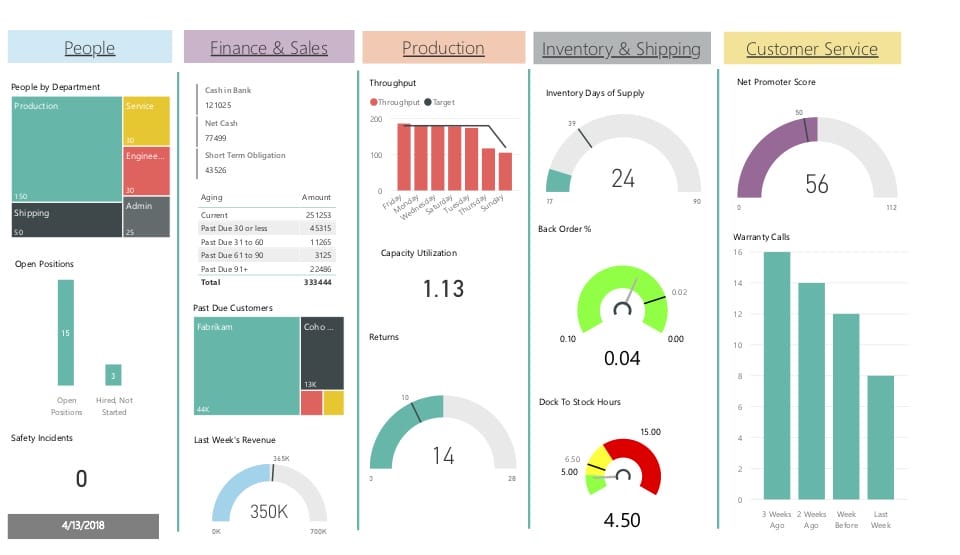Putting together a magazine is project management. Putting together almost 60 magazines a year is project management on steroids. I look at my professional life in two different ways. Before I had a scorecard to run my department and after. I can’t begin to describe the benefits that come from knowing where exactly you are in your business from the glance of one sheet.
To fully understand why every business needs to have a scorecard, I talked with Eric Newell, the CEO for Stoneridge Software, a business technology consulting company headquartered in Barnesville, Minn.
Why do you need a scorecard?
How often do you look at your P&L and balance sheet? Be honest. You’re supposed to look at it at least every month but, come on, do you really? The nitty-gritty of financial statements can be tough to look at. Now, imagine you had a visually interesting sheet each week that had all the important information for your business on it. This sheet would track things like AR and cash, accounts outstanding, revenue and opportunity pipeline. Game changer, right?
Stoneridge has proven what a successful scorecard can do for a business as it has created one of the most impressive scorecards around. Since they created their first one in 2014, it’s gone through dozens of iterations but the reason for it has never changed.
“The whole goal of a weekly scorecard is to track the most relevant actionable items so you can make a decision or make a change,” said Newell. “A key factor is a consistent cadence in reviewing this information. You want to be able to look at those things and have the opportunity to see, ‘Oh boy, we’ve got an issue here. We need to do something about it before it becomes a problem.’

What should you track?
The scorecard will vary based on your industry. However, some common metrics to track for any business include cash balance, accounts receivable, sales, team members/employees and customer satisfaction.
As an organization, you need to decide for yourself the most important measures to track. But it must be something you can act on. According to Stoneridge, an example of some of the industry-specific items to track include…
Professional Services: billed hours/utilization, available resources to bill, weekly revenue and margin, weighted pipeline and backlog
Distribution Center: on-time shipments, internal order cycle time, order picking accuracy and warehouse capacity.
Manufacturing: yield, capacity utilization and returns/quality
Since they’re a professional services based organization, Stoneridge Software has some specific metrics they track in their scorecards.
“As a professional services firm, utilization is our main metric,” said Newell. “How many hours are people billable? This metric would be of similar importance for law firms, architects or any company where you’ve got people billing per hour. We need to see what our current utilization is versus what we expected it to be. Then we can go, ‘We need to find work for these five people because they aren’t at full capacity right now.’”

How specific do you need to be?
Yes, you should get a company-wide scorecard yesterday. However, don’t stop there. Once your scorecard is nailed down, you can also create departmental ones. This will help your managers do their best work possible. Probably one of the best scorecards to create that will have a tangible impact on your ROI is for your sales department. Here, you can track things like opportunities pipeline, close percentages, meetings, leads generated, etc.
“As you get more advanced scorecards and as you start to become a larger business, it’s important to be able to have department-level scorecards that really help your managers become the leaders of those particular departments and make better fact-based decisions,” said Newell.
OK great, but how do you actually track this?
There are several different ways to implement scorecards in your business. Stoneridge Software has helped clients with this process, but anyone can start one and it doesn’t have to be complicated. At the most basic level, all you need is an Excel spreadsheet. A scorecard should be simple enough that it doesn’t take a lot of time to update. The weekly scorecard at Stoneridge only takes about 10 minutes every week to refresh.
To create the visual at-a-glance dashboard, Newell recommends downloading Microsoft Power BI, which is free for the basic plan, and then start tracking certain metrics.
“What are the key metrics that you need to be looking at? What matters to you on a weekly basis?” Newell asked. “Put that in a spreadsheet and then you use Power BI to do a little visualization of it and your team can go from there to analyze, consider and make decisions based on that information.”
About Stoneridge Software
Newell and his co-founders worked at Microsoft before deciding to branch off on their own in 2012. Stoneridge has grown to represent multiple Microsoft business applications for accounting, operations, sales and marketing. The primary industries they work with include manufacturing, distribution, professional services, construction, and agriculture. Since launching, they now have around 164 employees with offices in Barnesville, Fargo and Minneapolis.
Learn more at stoneridgesoftware.com.
To recap: The basics of why you need a scorecard
The business motivation for using a scorecard is that you are:
- Using data to make decisions
- Never assuming that what you’ve done is good enough
- Always asking yourself and your team what you can do to make what’s not working, work








